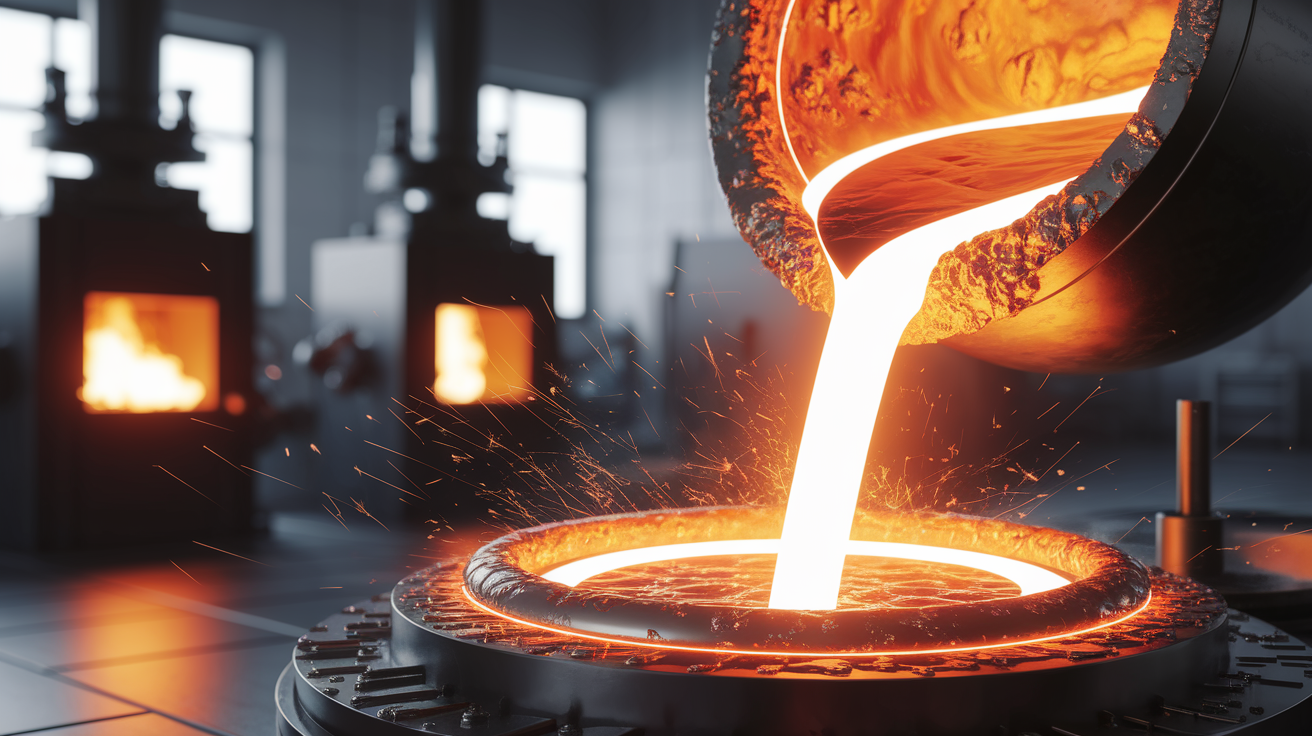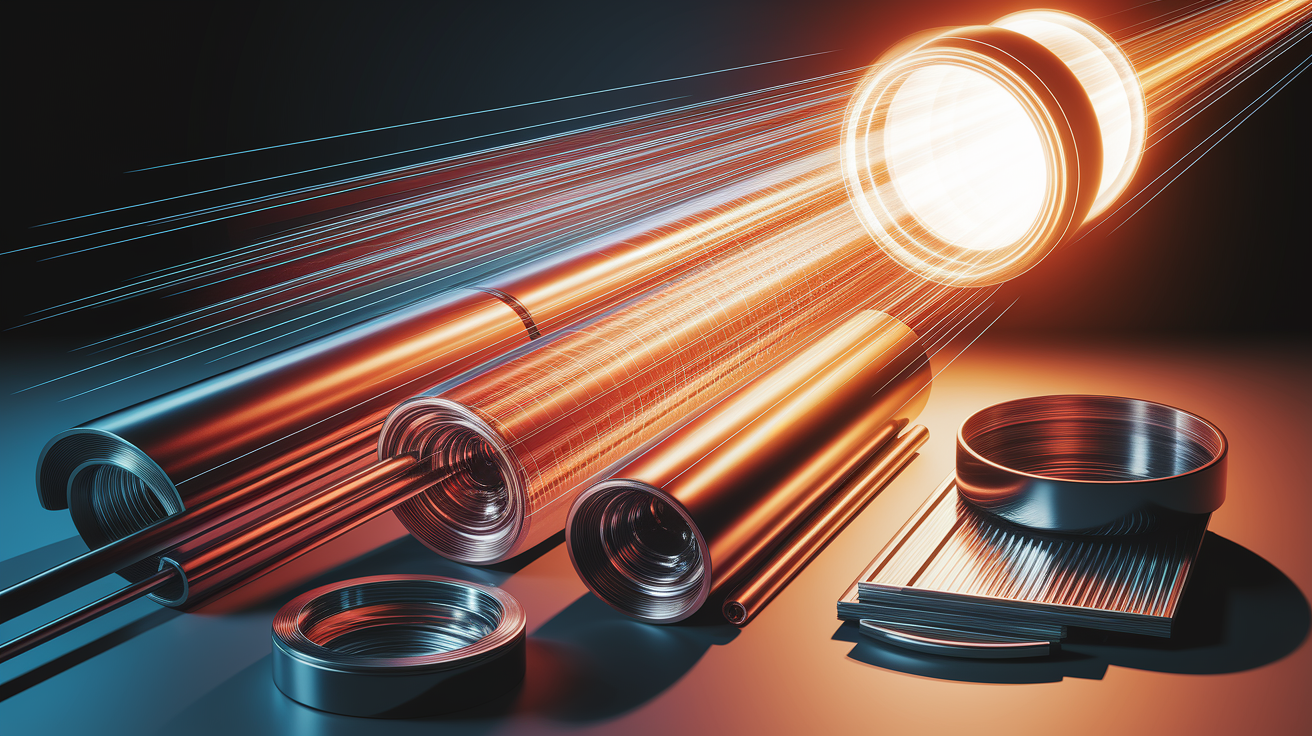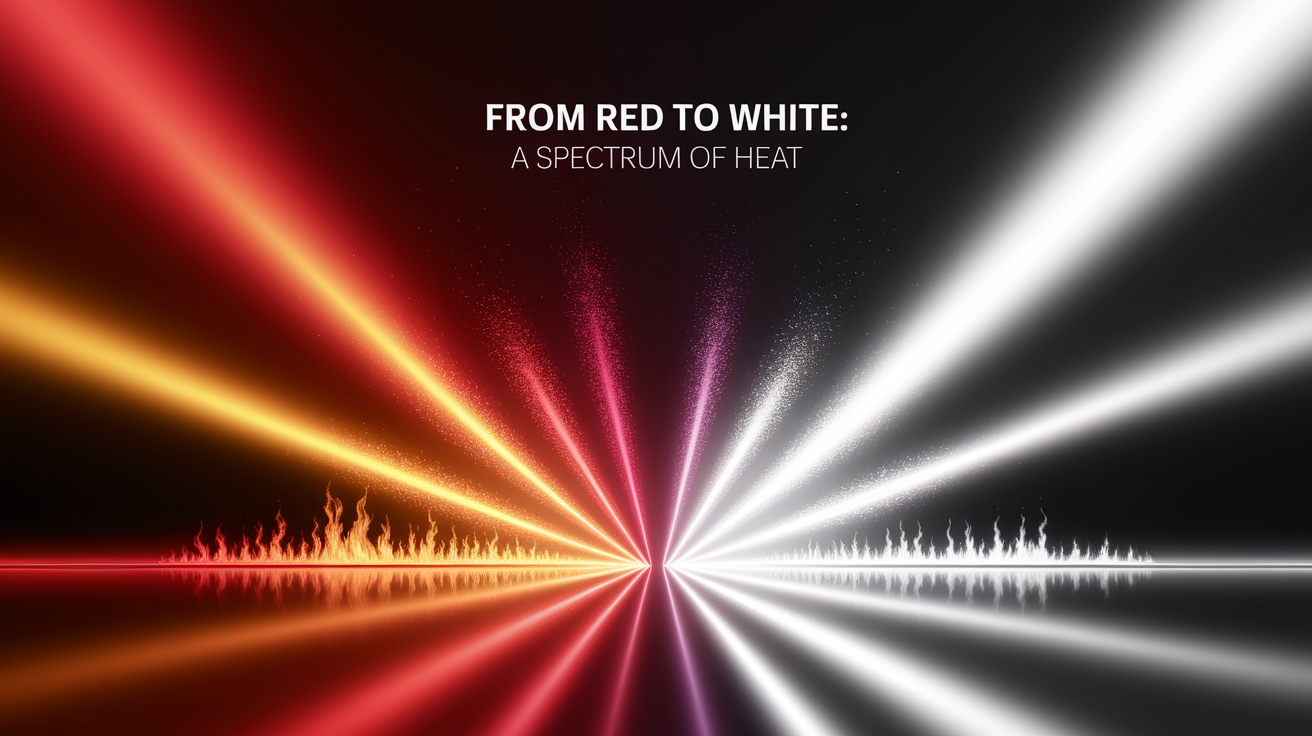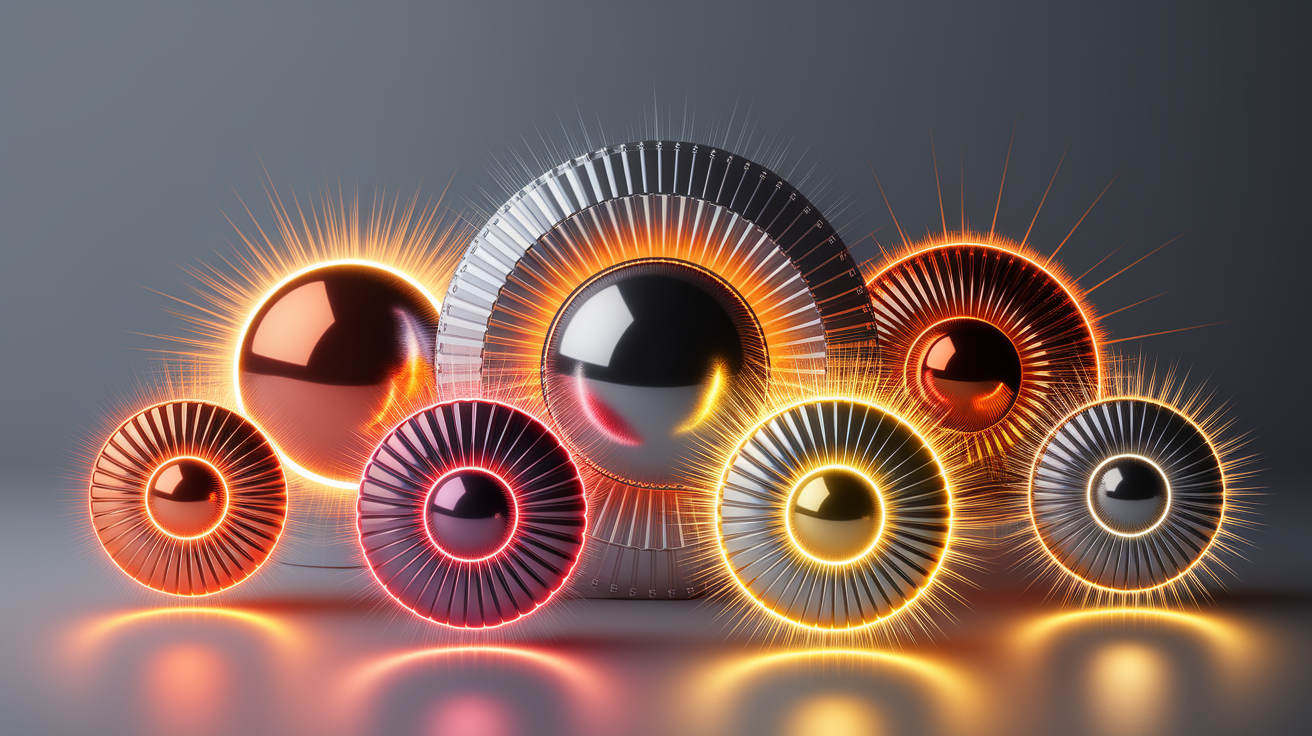Quick Answer: Metals glow when they’re heated because their atoms vibrate more intensely, releasing thermal radiation. As the temperature rises, the peak wavelength of this radiation shifts into the visible part of the electromagnetic spectrum, starting with red and progressing toward white. The exact glow color depends on both the temperature and the metal’s unique properties.
Introduction: The Fiery Secret Behind Glowing Metals
Hold a piece of steel in a forge and you’ll see it transform from dark gray to a glowing red, then orange, then white-hot! This magical change isn’t just for spectacle—it’s physics at work. The glow comes from the way heat energy transforms into light through a fascinating physical process called thermal radiation. While it might seem like the metal is “making” light out of nowhere, it’s actually converting heat into electromagnetic radiation we can see.

How Thermal Radiation Lights Up Metals
When a metal is heated, its atoms start vibrating faster due to the rising internal thermal energy. Electrons in those atoms jiggle and interact, releasing photons—tiny packets of light energy.

- At cooler temperatures, most radiation is in the infrared range, which we can’t see.
- As temperature increases, the peak radiation shifts toward shorter, visible wavelengths.
- This is a manifestation of principles described by Planck’s law and the Stefan-Boltzmann law in thermodynamics.
Put simply: more heat means more light, and with enough heat, that light enters colors our eyes pick up.
From Red to White: A Spectrum of Heat
The color changes of hot metals follow a predictable path thanks to black-body radiation. At low visible glow temperatures (around 525 °C), the first color we see is a dim red. This transformation is a result of the wavelength of emitted light shortening as the temperature rises.

- Dull Red: Just above the Draper point, metals barely glow to the naked eye.
- Cherry Red to Orange: Higher heat pushes light toward the orange part of the spectrum.
- Yellow to White: Many wavelengths mix together; at these high temperatures, metals appear almost blindingly white.
Interestingly, metals rarely show green or blue from thermal emission alone—these colors mix into white light long before they’re distinct to our eyes.
Why Different Metals Glow Differently
Not all metals are equal when it comes to glowing. Their emissivity—the ability to emit radiation—varies based on atomic structure, surface oxidation, and thermal properties.

- Tungsten: High melting point and high emissivity, glows bright white at extreme heat (perfect for incandescent bulbs).
- Aluminum: Lower emissivity; may appear dimmer at the same temperature compared to steel.
- Copper: Oxidation layers can create distinct color tints in the glow.
In short, a glowing metal’s exact brightness and richness of color depend on how it interacts with heat and light at the atomic level.
Practical Glows: How We Use Hot Metals
Glowing metals aren’t just pretty—they’re practical. Humans have built entire crafts and industries around their fiery spectacle.

- Temperature Estimation: Blacksmiths and metalworkers judge metal heat by its glow color, a skill developed long before modern thermometers.
- Lighting: Incandescent bulbs rely on a tungsten filament heated to a brilliant white-hot state, producing light through incandescence.
- Industrial Processes: In metallurgy, careful monitoring of glow helps control the hardness and strength of final products.
These practical uses stem from the simple truth: as temperature rises past about 798 K, visible light starts to shine, giving us a built-in color code for heat.
Conclusion: The Radiant Dance of Hot Metals
From a soft red blush to an intense white blaze, hot metals put on a dazzling show that’s more than just eye-catching—it’s a visible signature of the laws of physics. The way thermal radiation flows through the electromagnetic spectrum reveals a deep link between heat, light, and atomic motion. So, next time you see a blacksmith’s forge or the glowing coil of a toaster, you’ll know you’re watching heat and light dance in perfect scientific harmony.













